Pennsylvania is a state where you can enjoy seeing a wide range of bird species. There are numerous ducks here, and if you have not thought much about these birds before, now could be a great time to learn more about some of the species commonly spotted in this state.
Here are some of the duck species that you are likely to be able to see in Pennsylvania, and some information about when you are likely to see them.
Mallard

- Anas platyrhynchos
- Length: 19.7 – 25.6 in (50 – 65 cm)
- Weight: 35.3 – 45.9 oz (1000 – 1300 g)
- Wingspan: 32.3 – 37.4 in (82 – 95 cm)
Mallards are common ducks across much of the US, and here in Pennsylvania, as in other areas, you can see them year-round. These ducks are recorded on the birdwatching checklists of Pennsylvania birdwatchers 19% of the time in winter, and 16% of the time in summer.
Wood Ducks
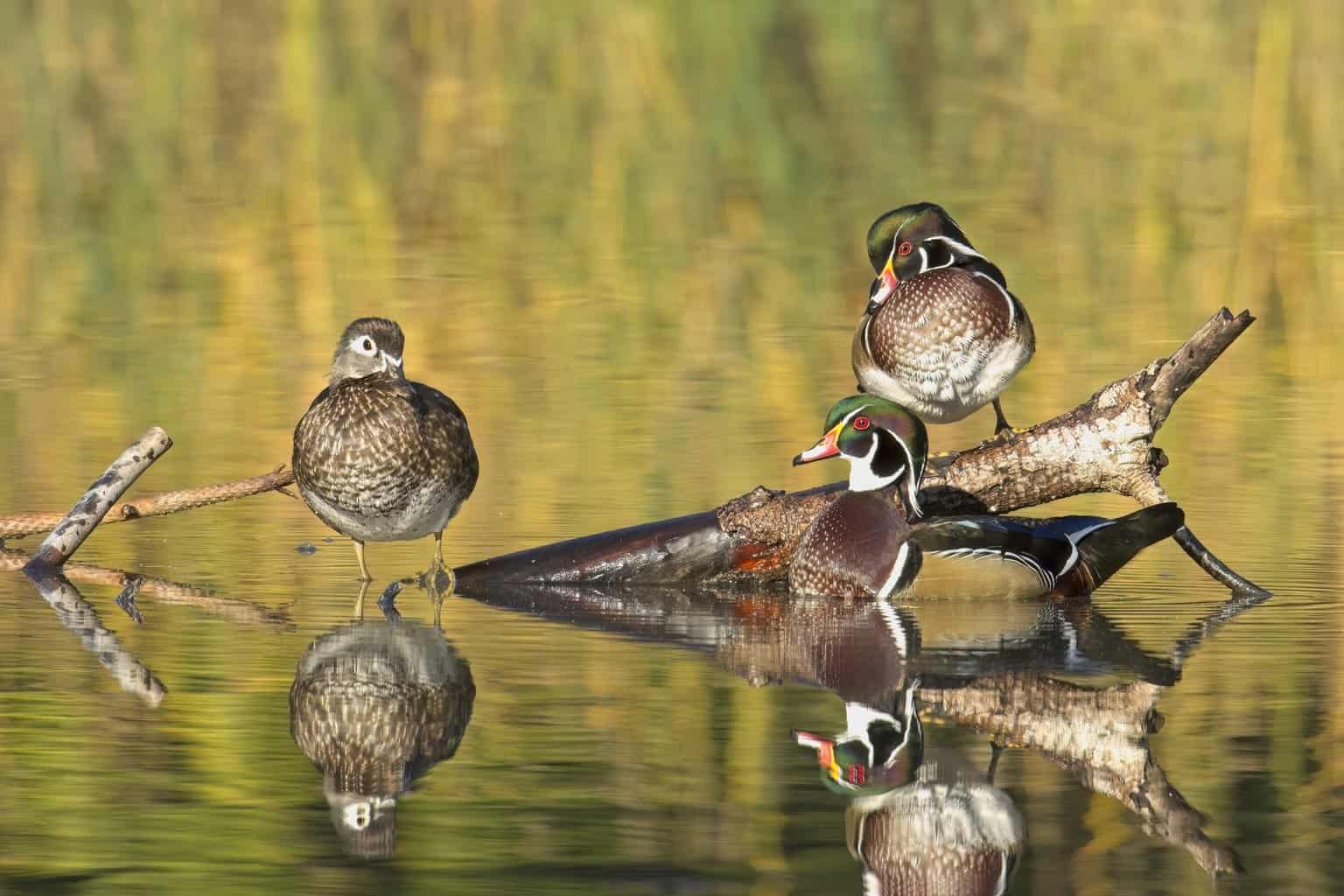
- Aix sponsa
- Length: 18.5 – 21.3 in (47 – 54 cm)
- Weight: 16.0 – 30.4 oz (454 – 862 g)
- Wingspan: 26.0 – 28.7 in (66 – 73 cm)
Wood ducks are another duck that you can see all year round in Pennsylvania. However, you are most likely to spot this species in the state during the summer, when they appear on 8% of birdwatchers’ checklists.
American Black Ducks
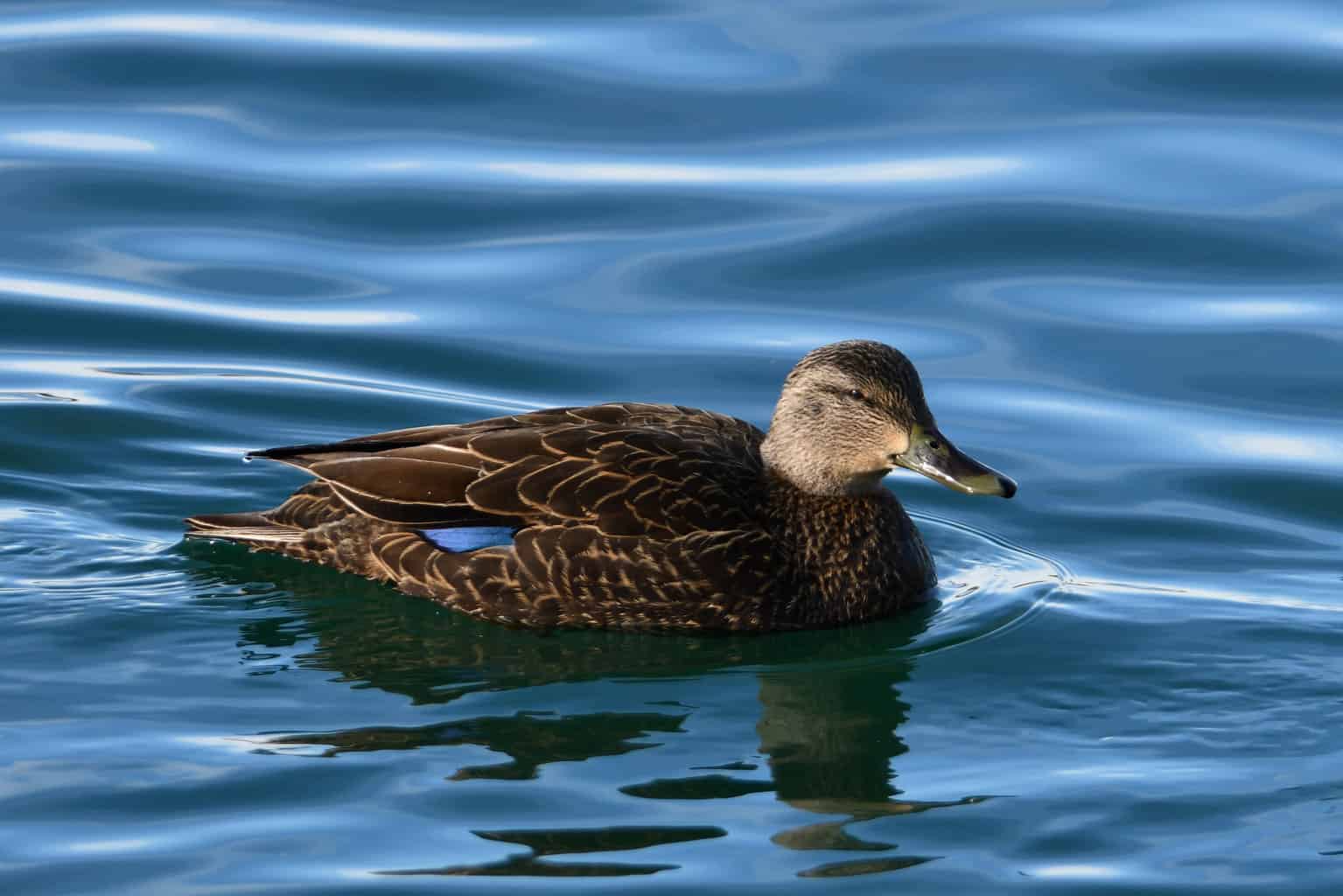
- Anas rubripes
- Length: 19 – 23 in (48 – 58 cm)
- Weight: 49.6 oz (1406 g)
- Wingspan: 33 – 36 in (84 – 91 cm)
Though some American black ducks reside in Pennsylvania throughout the year, most arrive in October and stay for the winter in the state before they depart again around April. They are recorded on around 5% of the winter checklists of birdwatchers in this area.
Green-Winged Teal
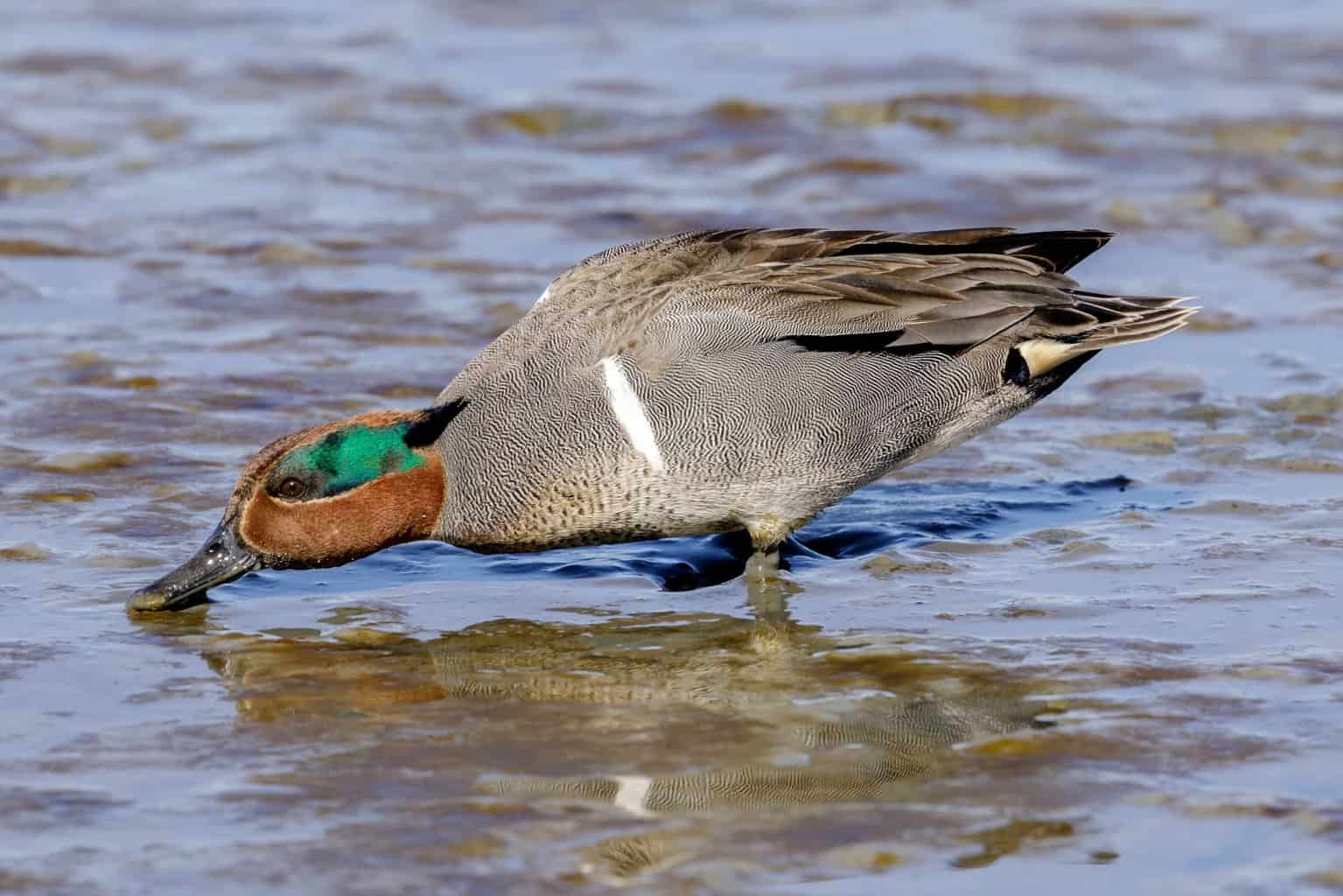
- Anas crecca
- Length: 12.2 – 15.3 in (31 – 39 cm)
- Weight: 4.9 – 17.6 oz (140 – 500 g)
- Wingspan: 20.5 – 23.2 in (52 – 59 cm)
This is another duck sometimes seen here throughout the year. However, you are most likely to see them during the winter months, between September and April, when they appear on 1% of state birdwatchers’ checklists.
Gadwalls
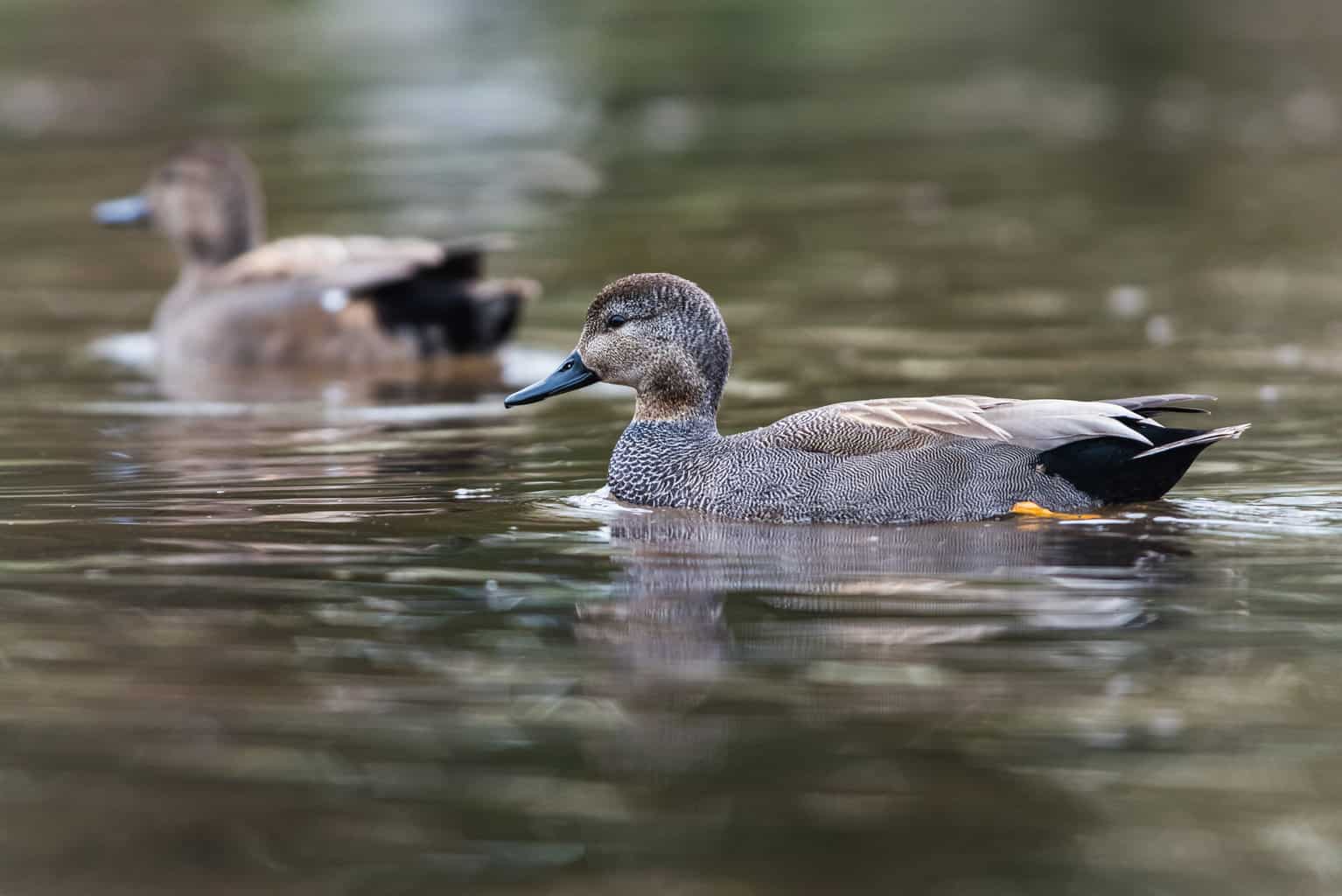
- Mareca strepera
- Length: 19 – 23 in (48 – 58 cm)
- Weight: 35.27 oz (1000 g)
- Wingspan: 31 – 36 in (79 – 91 cm)
Again, this duck is sometimes spotted throughout the year. But you are most likely to be able to spot them in Pennsylvania through the colder months of the year. They are typically present here between October and April when they appear on 2% of birdwatchers’ checklists.
American Wigeon

- Mareca americana
- Length: 16.5 – 23.2 in (42 – 59 cm)
- Weight: 19.1 – 46.9 oz (540 – 1330 g)
- Wingspan: 33.1 in (84 cm)
You can typically expect to see American wigeons in Pennsylvania between their usual time of arrival in October, and their usual time of departure in April. Over the winter, these ducks also appear in 2% of birdwatchers’ checklists.
Northern Shovelers
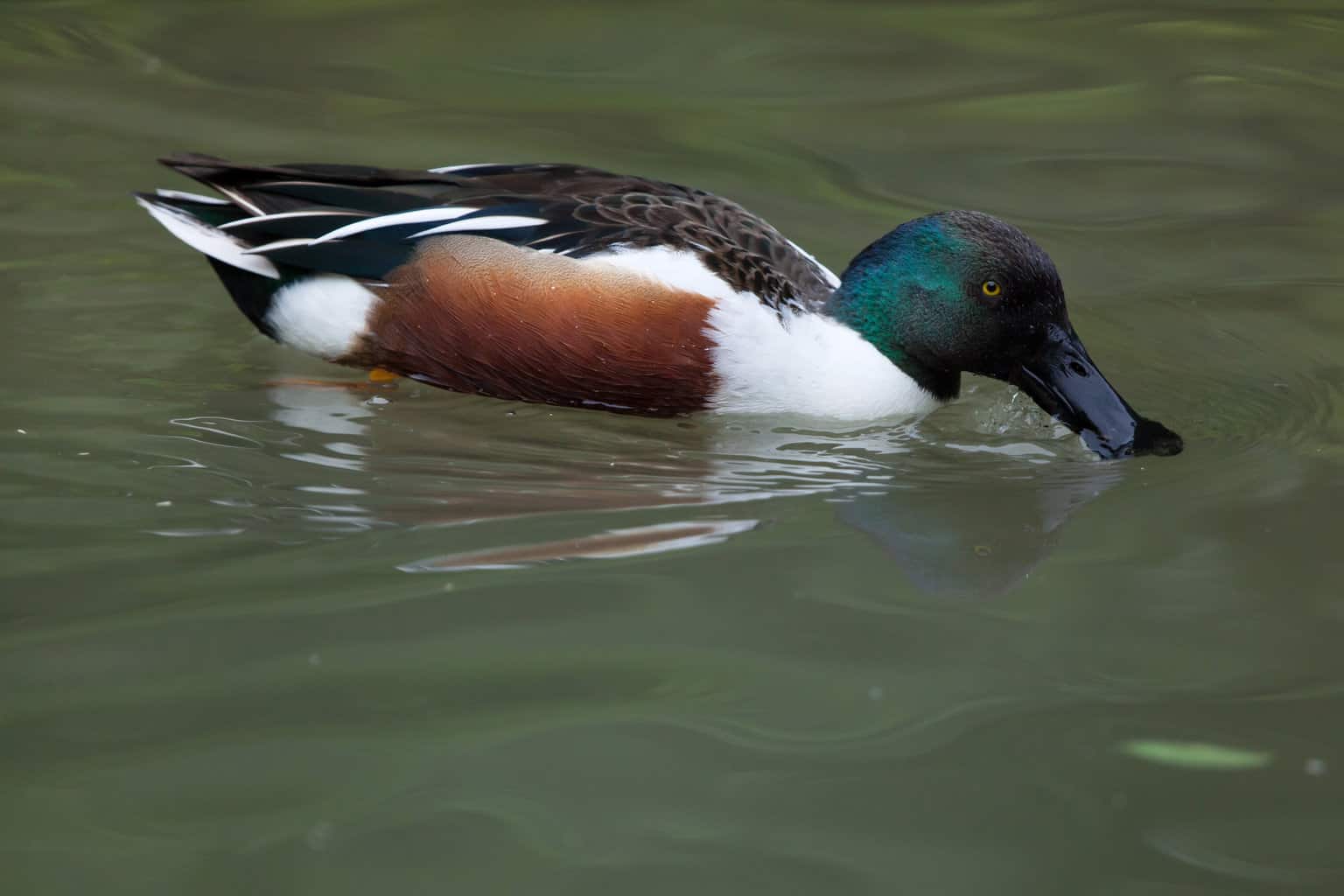
- Spatula clypeata
- Length: 17.3 – 20.1 in (44 – 51 cm)
- Weight: 14.1 – 28.9 oz (400 – 820 g)
- Wingspan: 27.2 – 33.1 in (69 – 84 cm)
These ducks have been spotted in this state throughout the year. But typically, they are most commonly spotted between September and April, when they appear in 1% of the checklists of birdwatchers from this state.
Northern Pintail
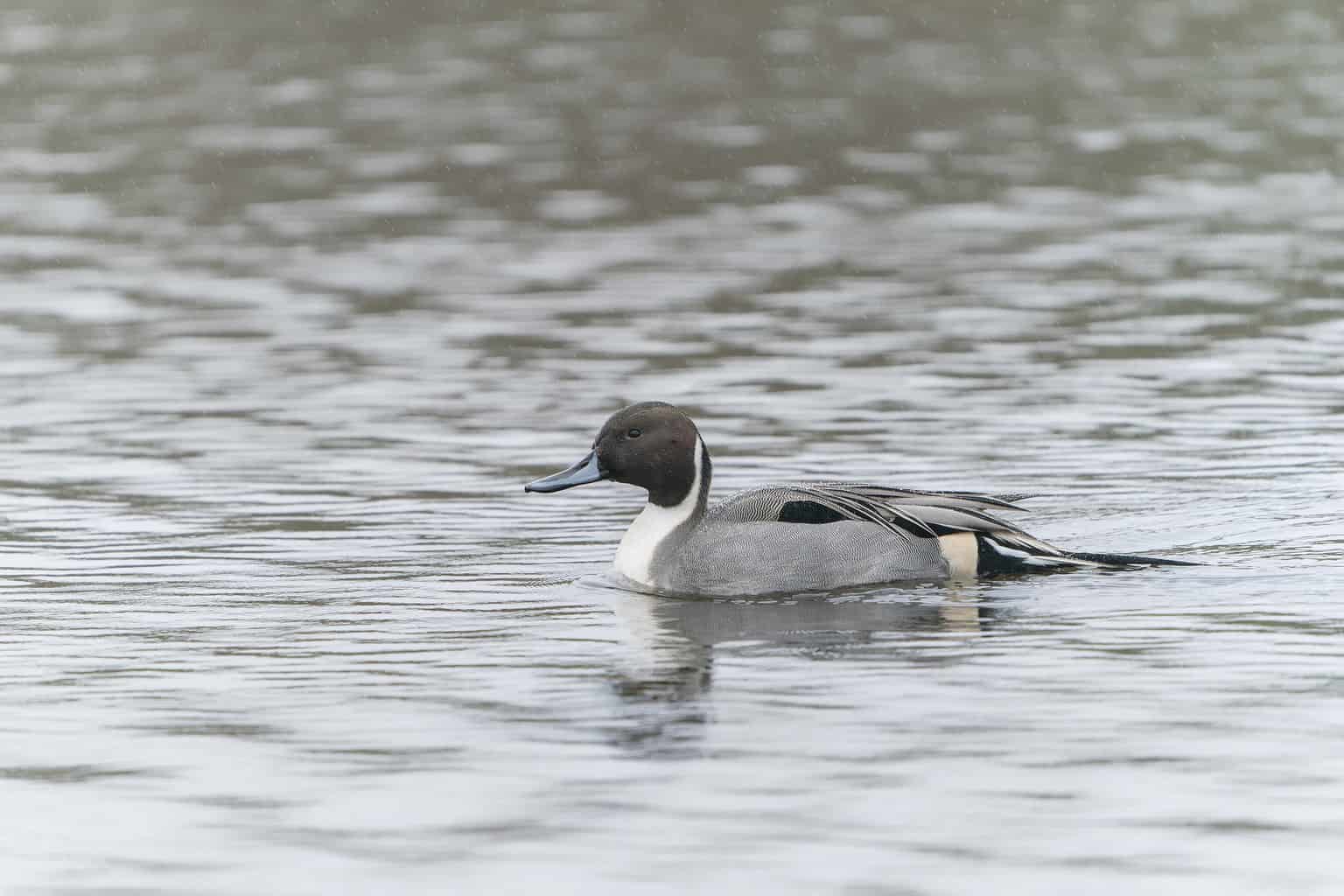
- Anas acuta
- Length: 20 – 26 in (51 – 66 cm)
- Weight: 36.33 oz (1030 g)
- Wingspan: 29 – 35 in (74 – 89 cm)
You can expect to see northern pintails in Pennsylvania sometime over the winter months, and occasionally at other times of the year. They are easiest to spot here, and most commonly seen, between October and March.
Blue-Winged Teal
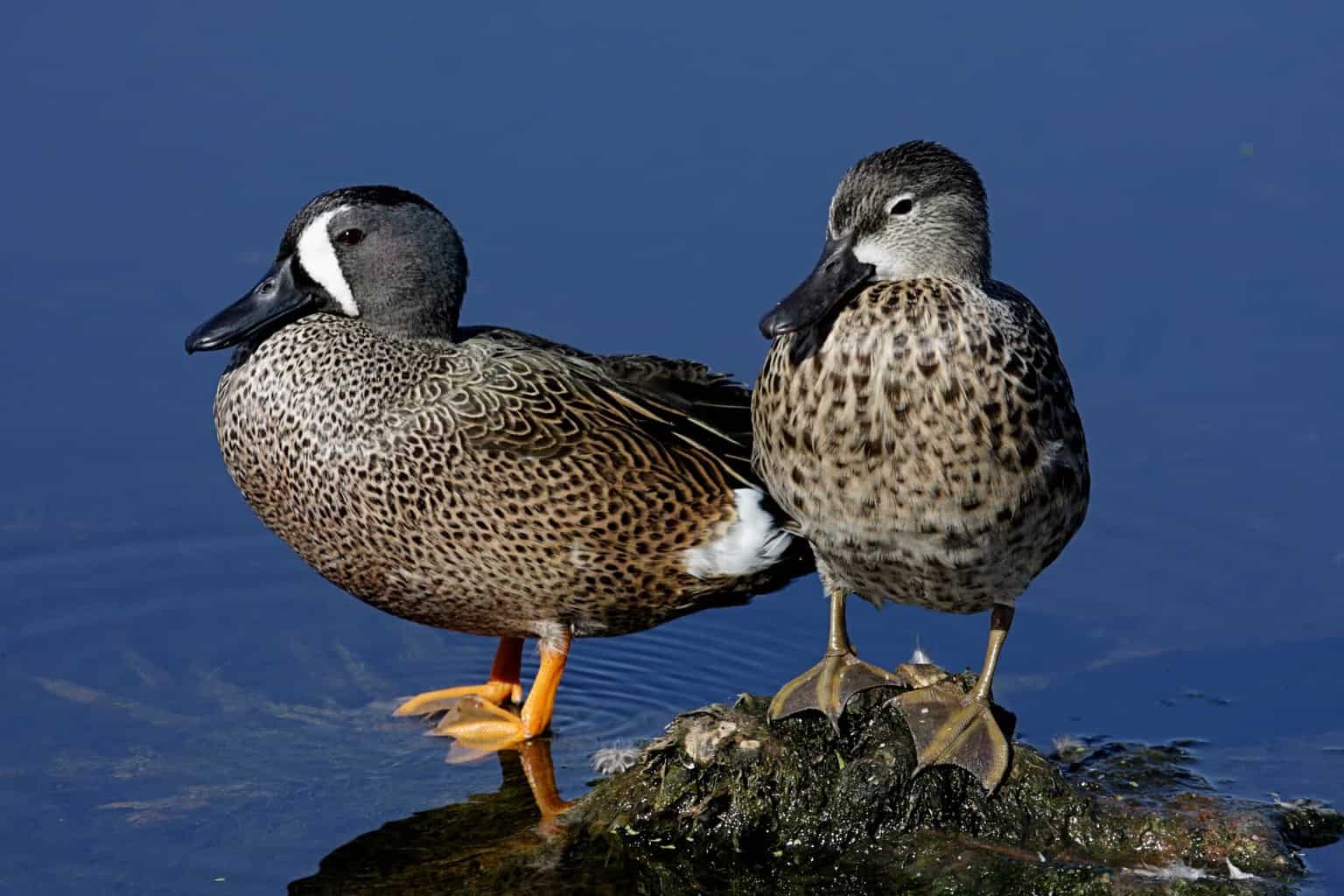
- Spatula discors
- Length: 15 – 17 in (38 – 43 cm)
- Weight: 19.18 oz (544 g)
- Wingspan: 23 – 31 in (58 – 79 cm)
The best times to see blue-winged teal in Pennsylvania are during the migration periods in spring and fall. Look out for them between the middle of March and May, and again between the middle of August and October for the best chance of a sighting.
Buffleheads
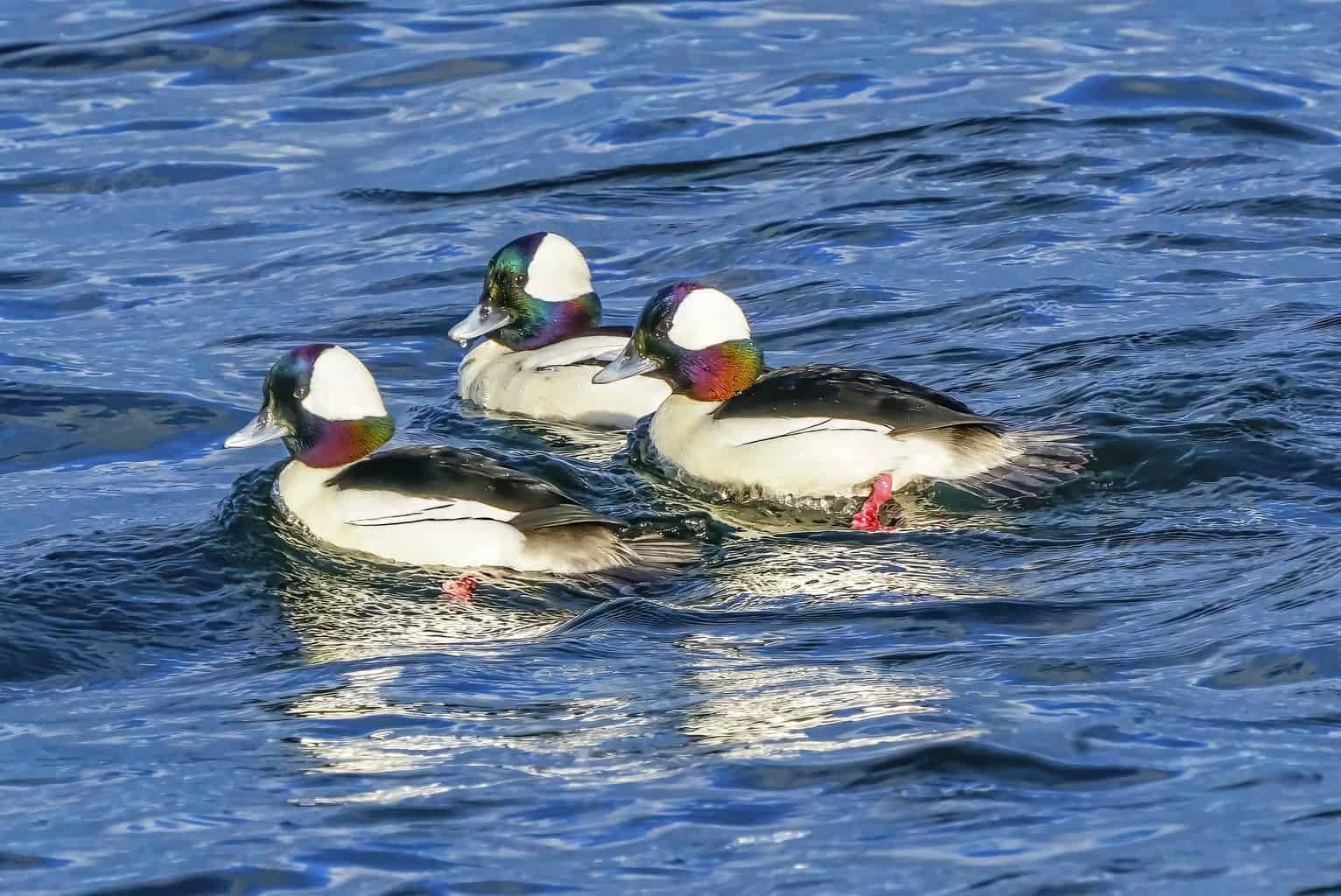
- Bucephala albeola
- Length: 13 – 16 in (33 – 41 cm)
- Weight: 21.16 oz (600 g)
- Wingspan: 20 – 24 in (51 – 61 cm)
In winter, in shallow bays and inlets on the shore of lake Erie, you may spot these diving ducks between November and May. But some may be seen elsewhere in the state over winter and occasionally through the rest of the year.
Ring-necked Ducks
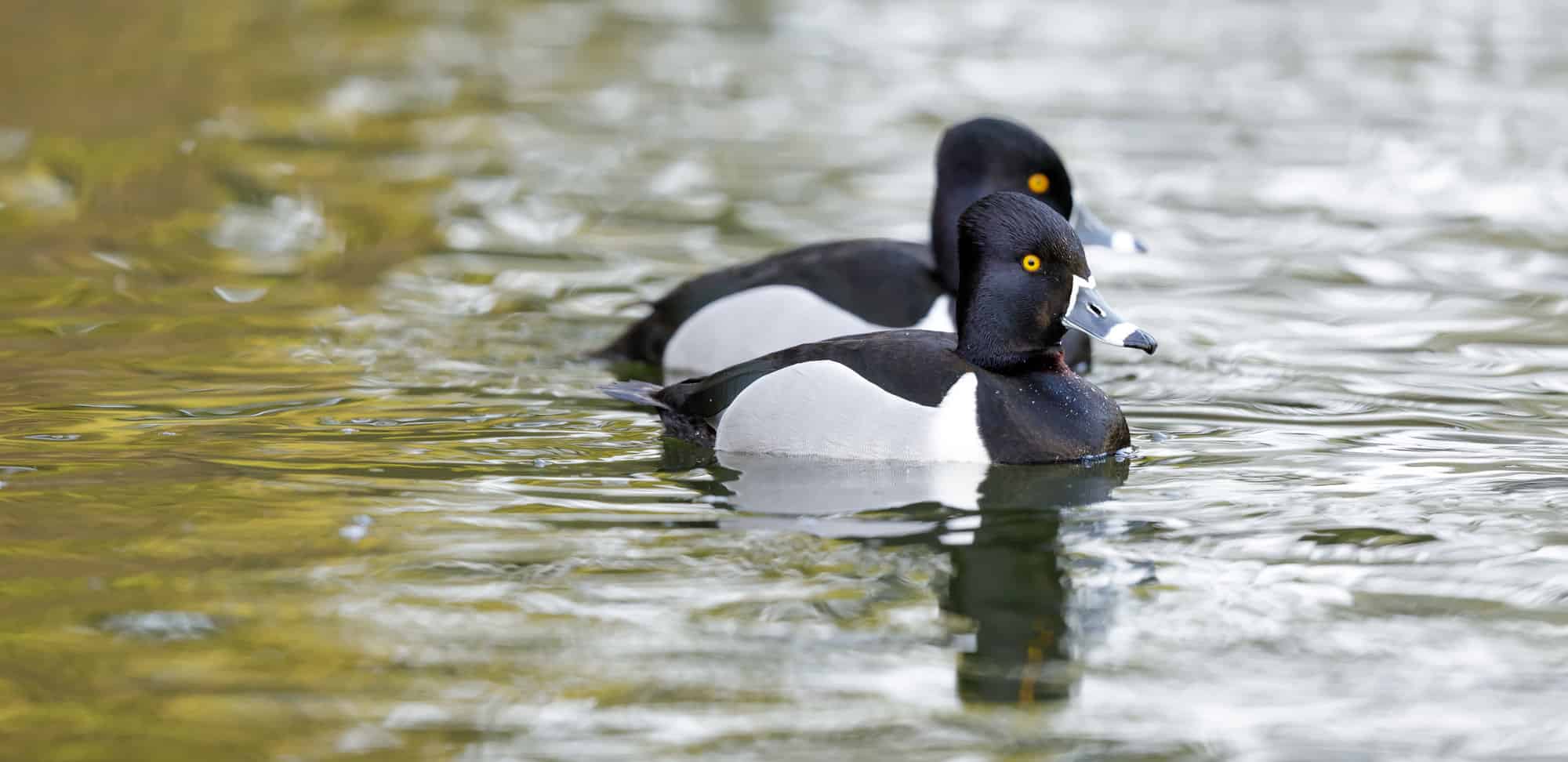
- Aythya collaris
- Length: 14 – 18 in (36 – 46 cm)
- Weight: 32.09 oz (909 g)
- Wingspan: 24 – 30 in (61 – 76 cm)
Ring-necked ducks can sometimes be spotted in this state year-round. But most often, they are found here over the winter months, between October and April, in small shallow ponds and rivers.
Ruddy Ducks
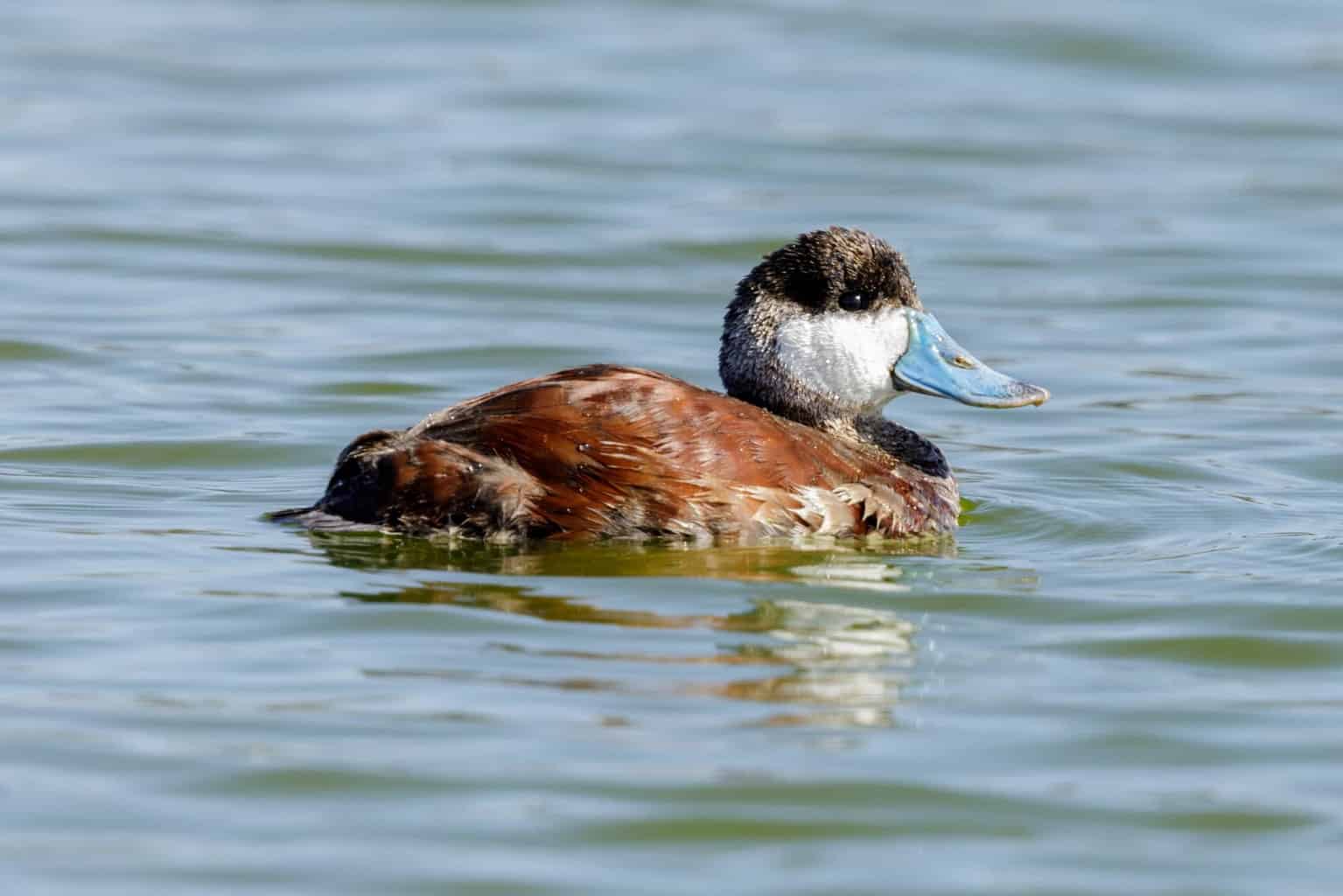
- Oxyura jamaicensis
- Length: 14 – 16 in (35.56 – 40.64 cm)
- Weight: 28.04 oz (795 g)
- Wingspan: 21 – 24 in (53 – 61 cm)
Ruddy ducks are another diving duck to look out for. They typically arrive in Pennsylvania in October and reside here until May, though some do stay here year-round. 2% of birdwatchers’ winter checklists in this state include this duck species.
Lesser Scaup
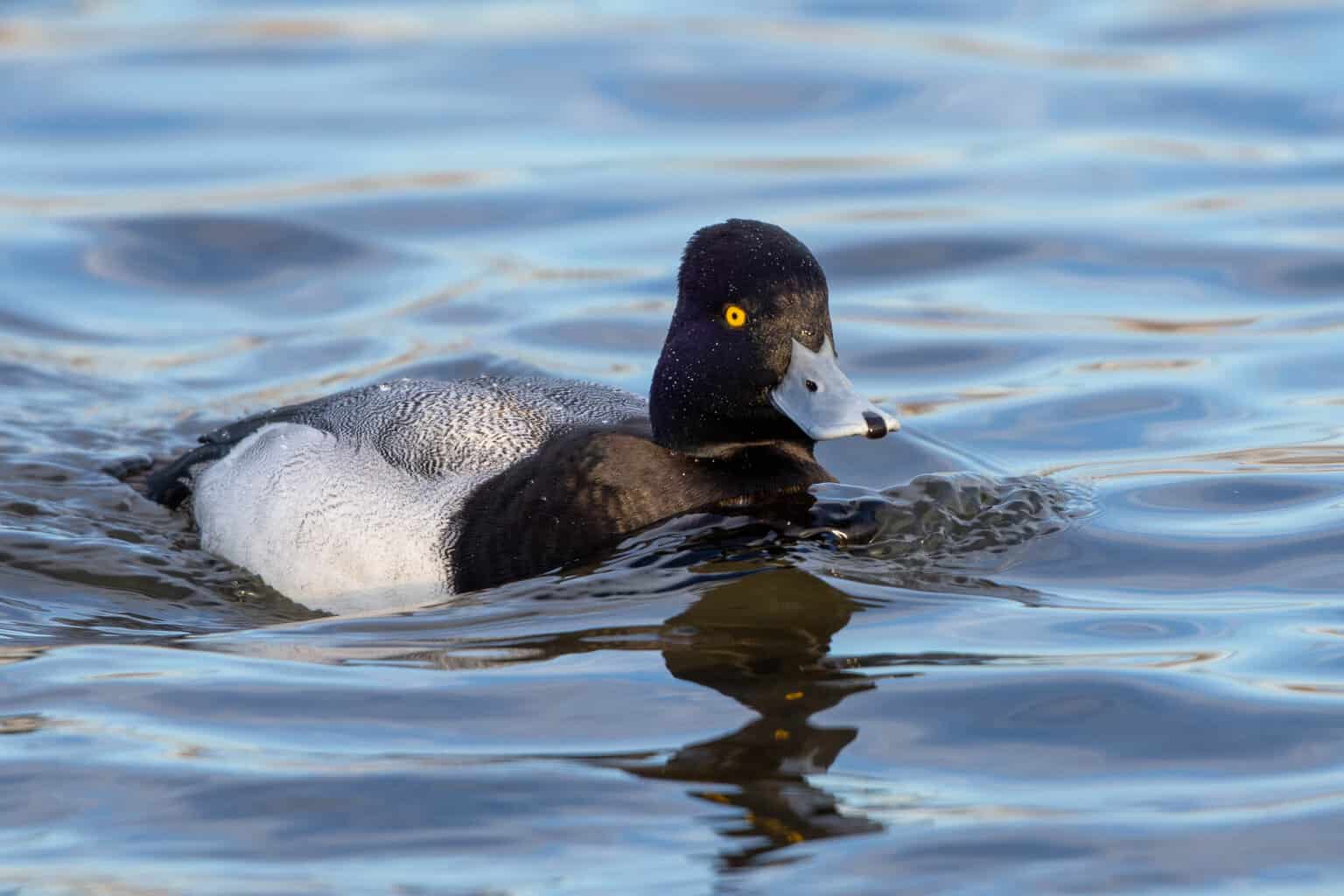
- Aythya affinis
- Length: 15 – 18 in (38 – 49 cm)
- Weight: 40.77 oz (1155 g)
- Wingspan: 24 – 33 in (61 – 84 cm)
Lesser scaups are also spotted sometimes here year-round. But they are most commonly encountered over the winter, between November and May, when they appear in 1% of birdwatchers’ checklists. They can be seen in large numbers on Lake Erie, and other large ponds, lakes, and reservoirs.
Redheads
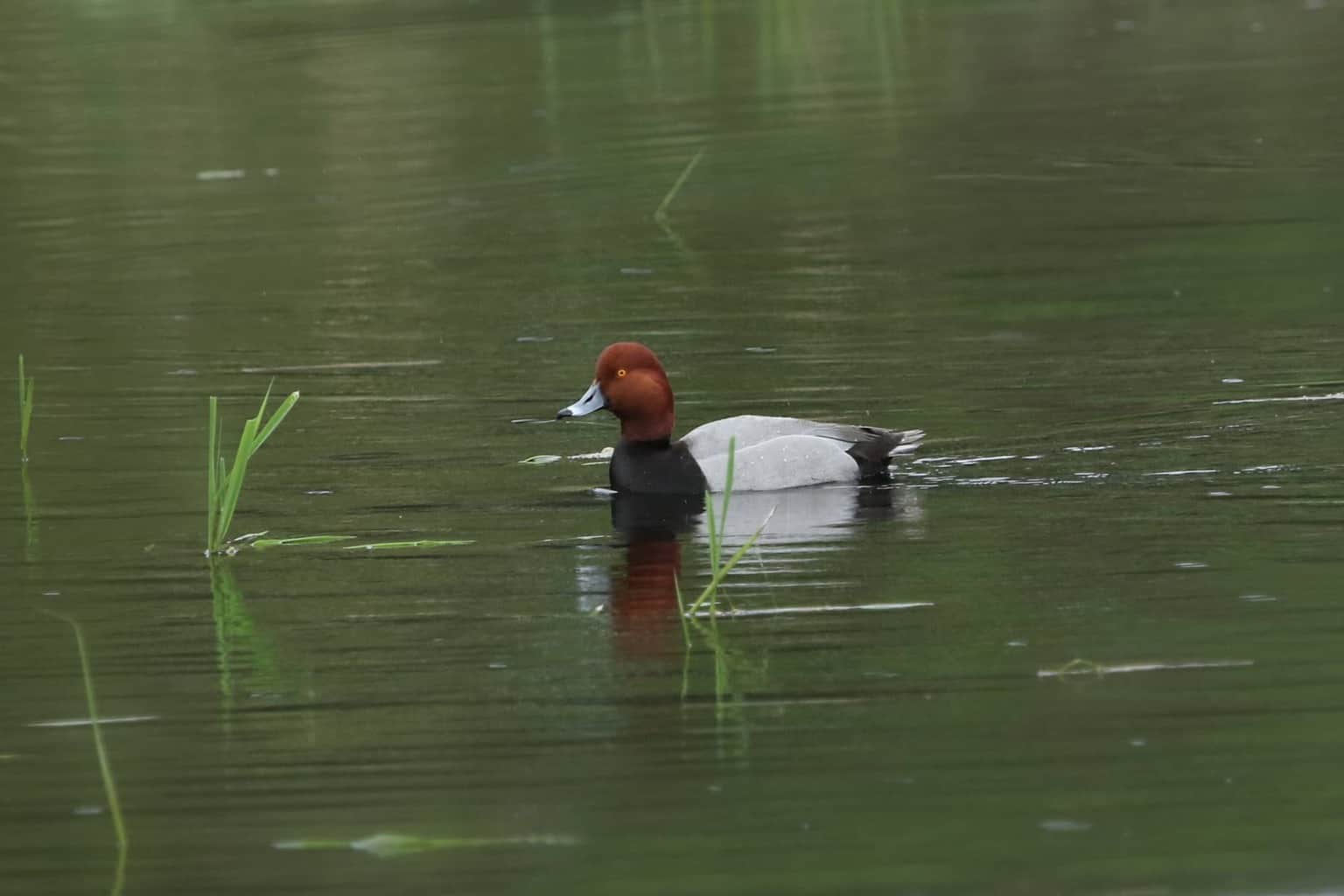
- Aythya americana
- Length: 18 – 22 in (46 – 56 cm)
- Weight: 43.03 oz (1219 g)
- Wingspan: 29 – 35 in (74 – 89 cm)
Redheads are also seen here all year on occasion but are typically seen here in winter. They are most commonly seen in Pennsylvania between November and April on the water where they can dive and root out some plant vegetation.
Greater Scaup
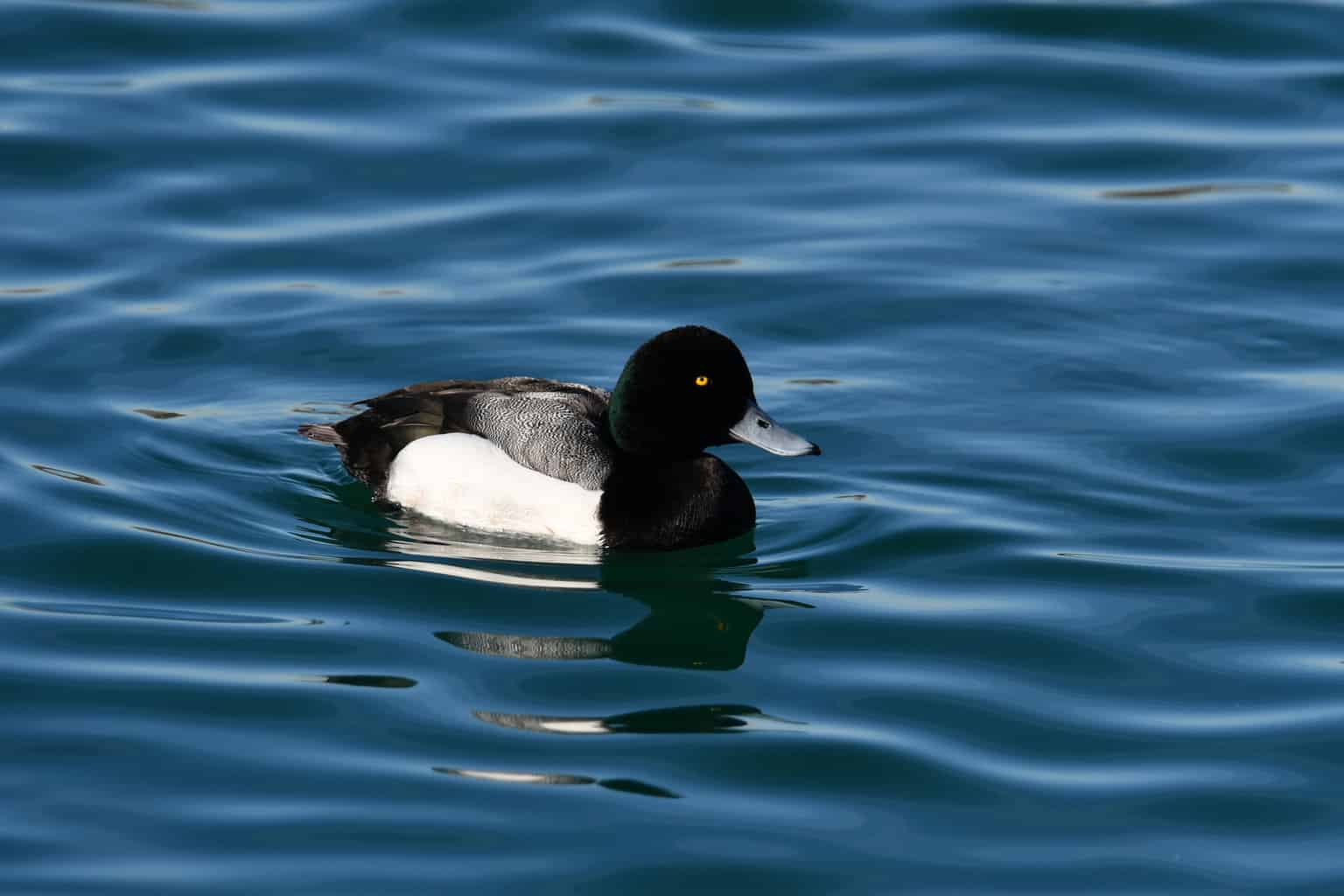
- Aythya marila
- Length: 15.3 – 22.1 in (39 – 56 cm)
- Weight: 25.6 – 48.0 oz (726 – 1360 g)
- Wingspan: 28.4 – 31.1 in (72 – 79 cm)
This is another duck that you can see on Lake Erie and other large bodies of water in winter. Look out for this species in Pennsylvania between November and April, forming large raft-like structures of birds in groups out on the open water.
Canvasbacks
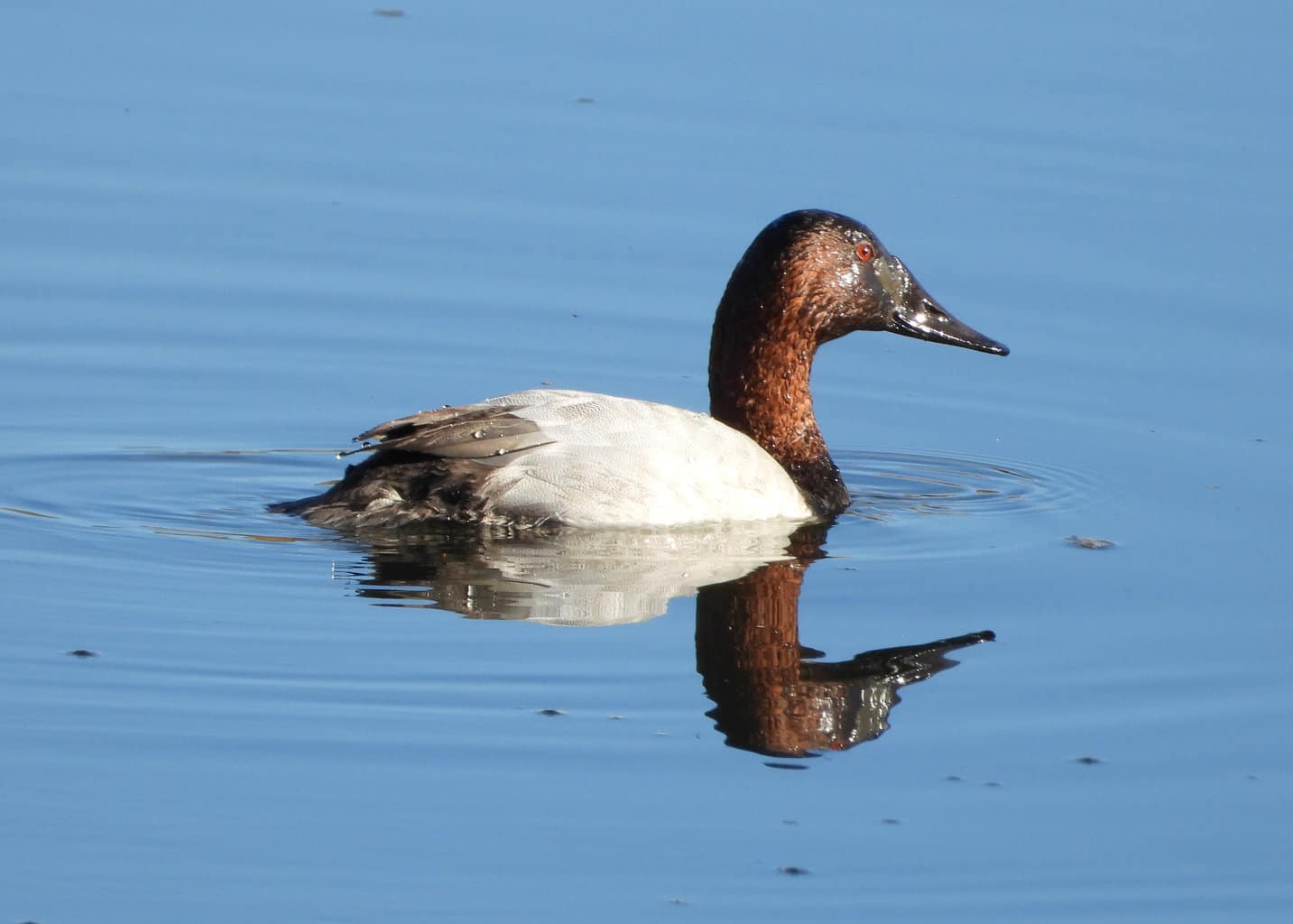
- Aythya valisineria
- Length: 19 – 24 in (48 – 61 cm)
- Weight: 58.48 oz (1657 g)
- Wingspan: 28 – 36 in (71 – 91 cm)
Canvasbacks are most typically seen in Pennsylvania between November and March, appearing in 1% of winter birdwatchers’ checklists in this state. They are also commonly seen out foraging for food in the open water of lakes and ponds.
Common Merganser
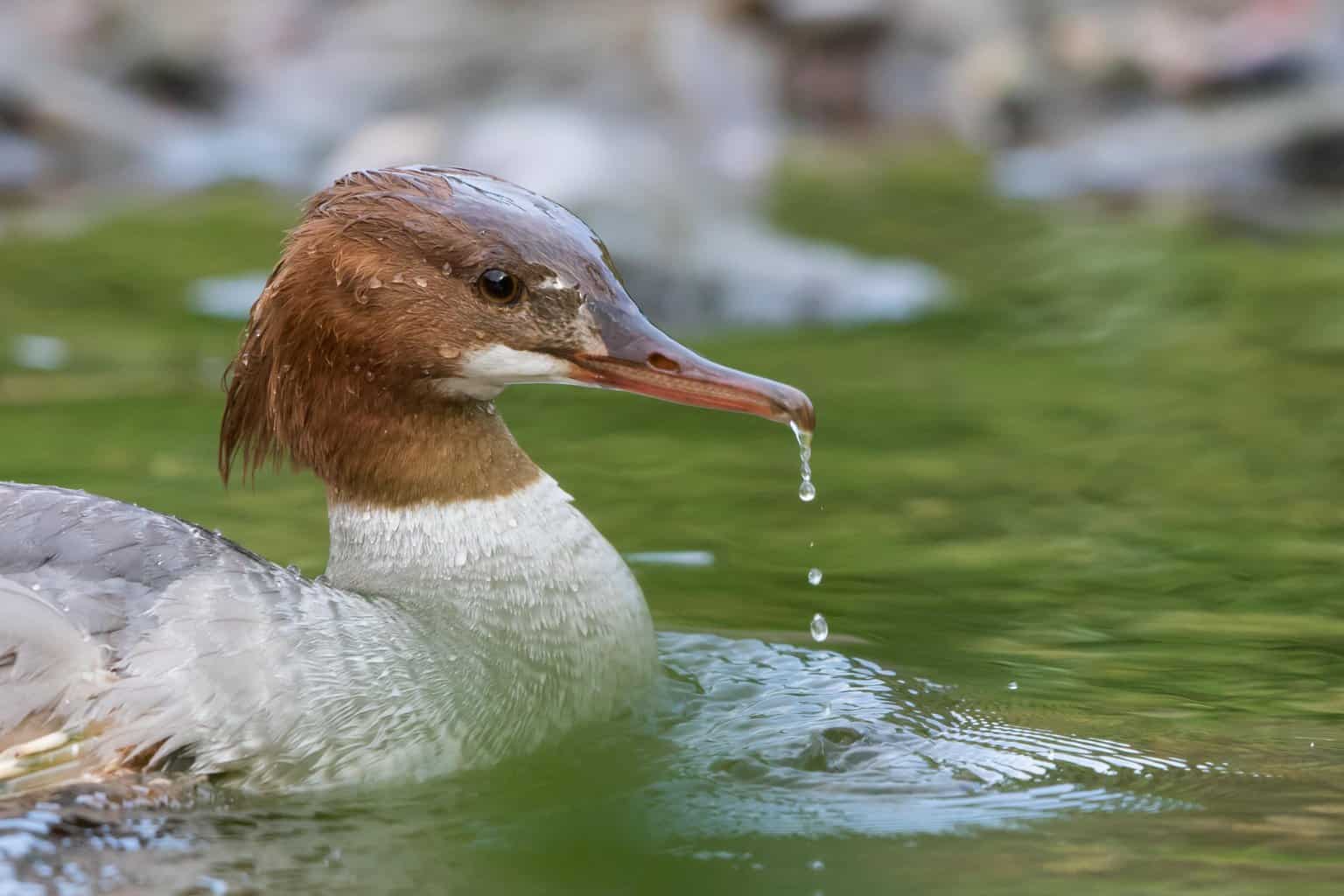
- Mergus merganser
- Length: 22 – 27 in (56 – 69 cm)
- Weight: 60.8 oz (1723 g)
- Wingspan: 31 – 37 in (79 – 94 cm)
Common mergansers are other ducks that might be seen in Pennsylvania over the winter, in freshwater lakes and ponds, small rivers, and shallow shorelines. You may see them in summer too, as they are recorded in 1% of birdwatchers’ checklists at this time. But you are most likely to see them between November and March when they are recorded in 9% of winter birdwatchers’ checklists in this state.
Hooded Merganser
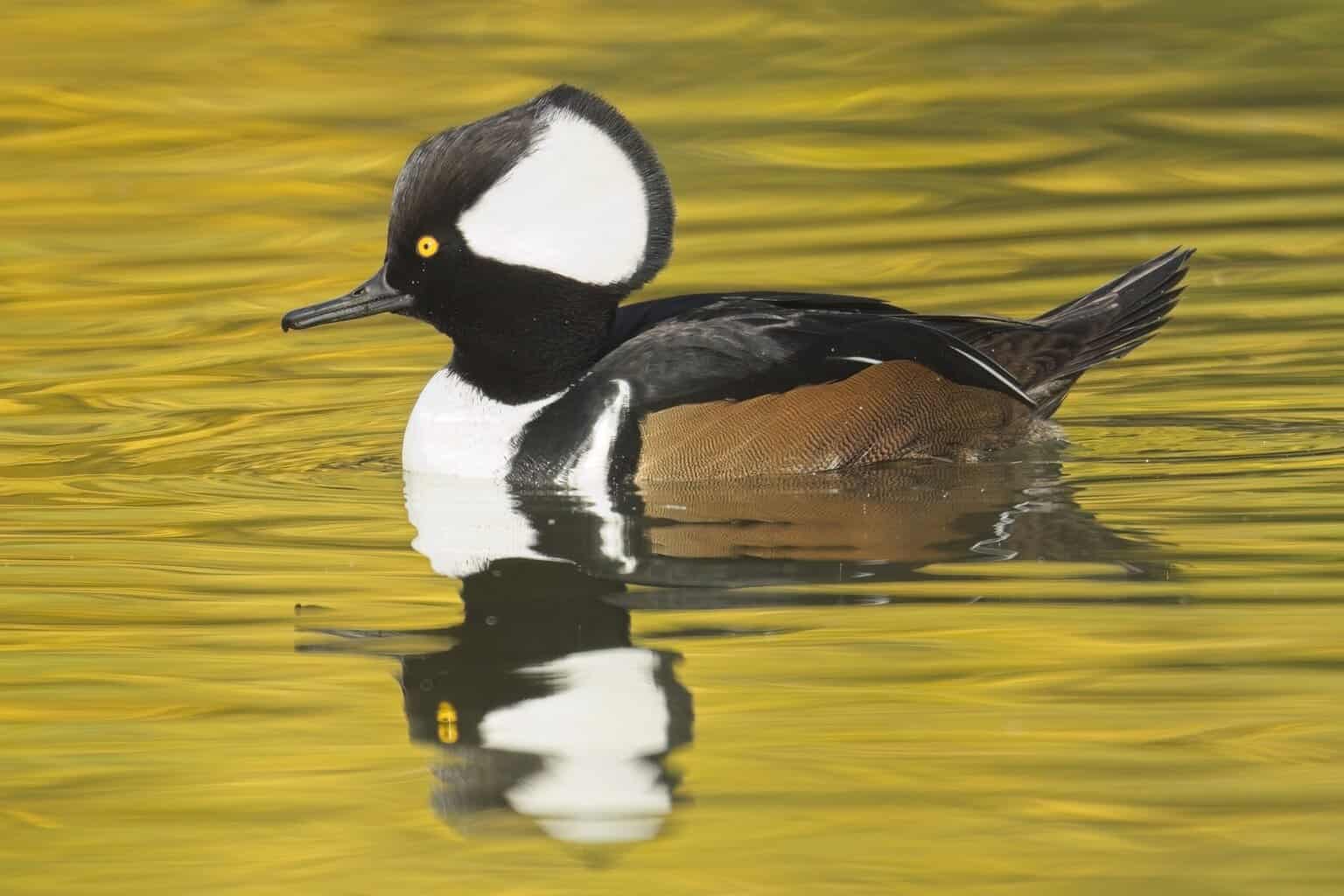
- Lophodytes cucullatus
- Length: 16 – 19 in (41 – 48 cm)
- Weight: 32.09 oz (909 g)
- Wingspan: 24 – 26 in (61 – 66 cm)
The hooded merganser is commonly found in Pennsylvania between November and April. It is recorded in 4% of birdwatchers’ winter checklists in this state. Look for them in freshwater lakes, ponds, and any slow-moving rivers, diving down under the water to catch their prey.
Red-breasted Merganser
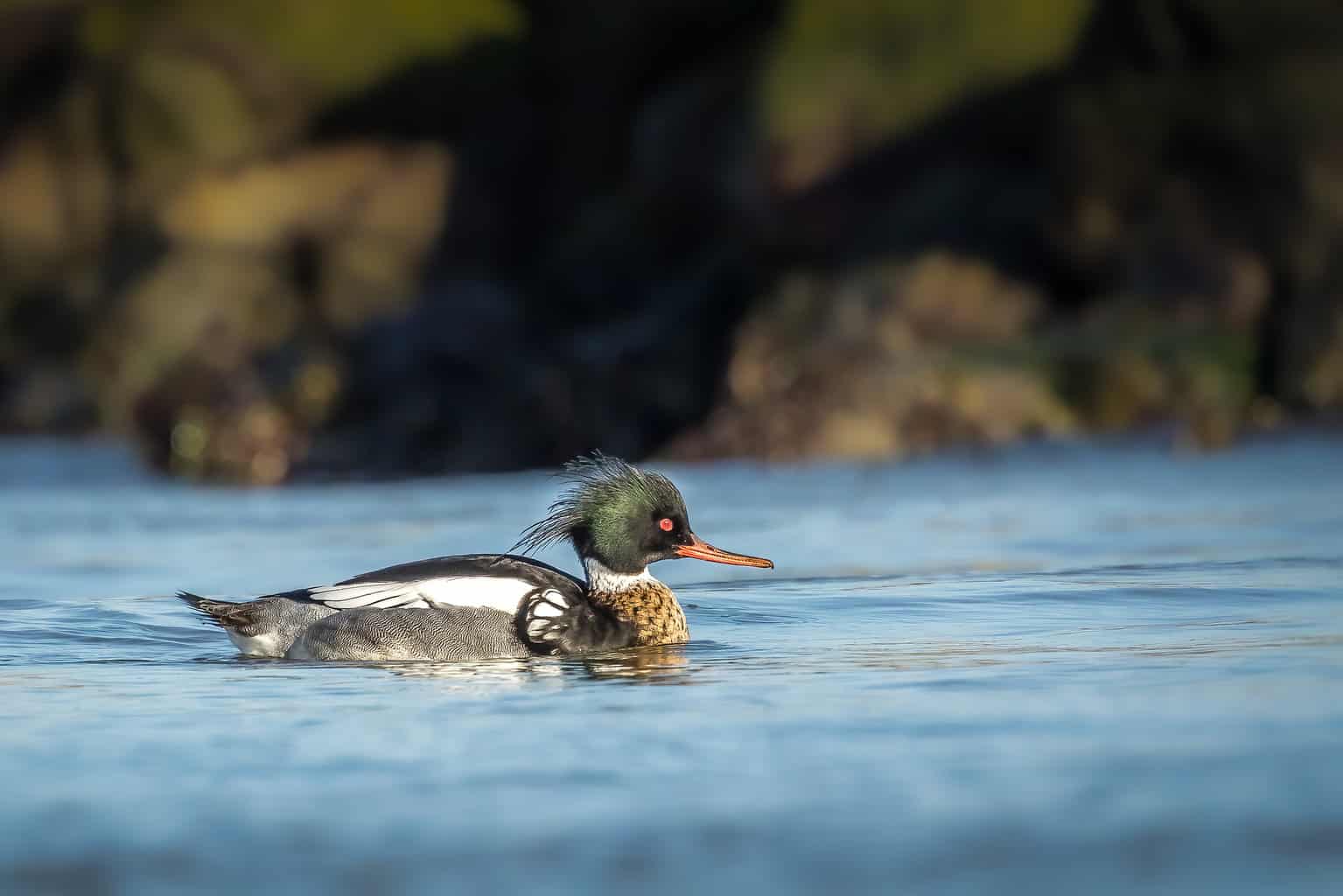
- Mergus serrator
- Length: 16 – 26 in (41 – 66 cm)
- Weight: 47.61 oz (1349 g)
- Wingspan: 31 – 35 in (79 – 89 cm)
These birds are also more commonly spotted here in winter, though some individuals do remain in the area year-round. You are most likely to see them here, between November and May in ponds, lakes, wetlands, or rivers.
Common Goldeneye
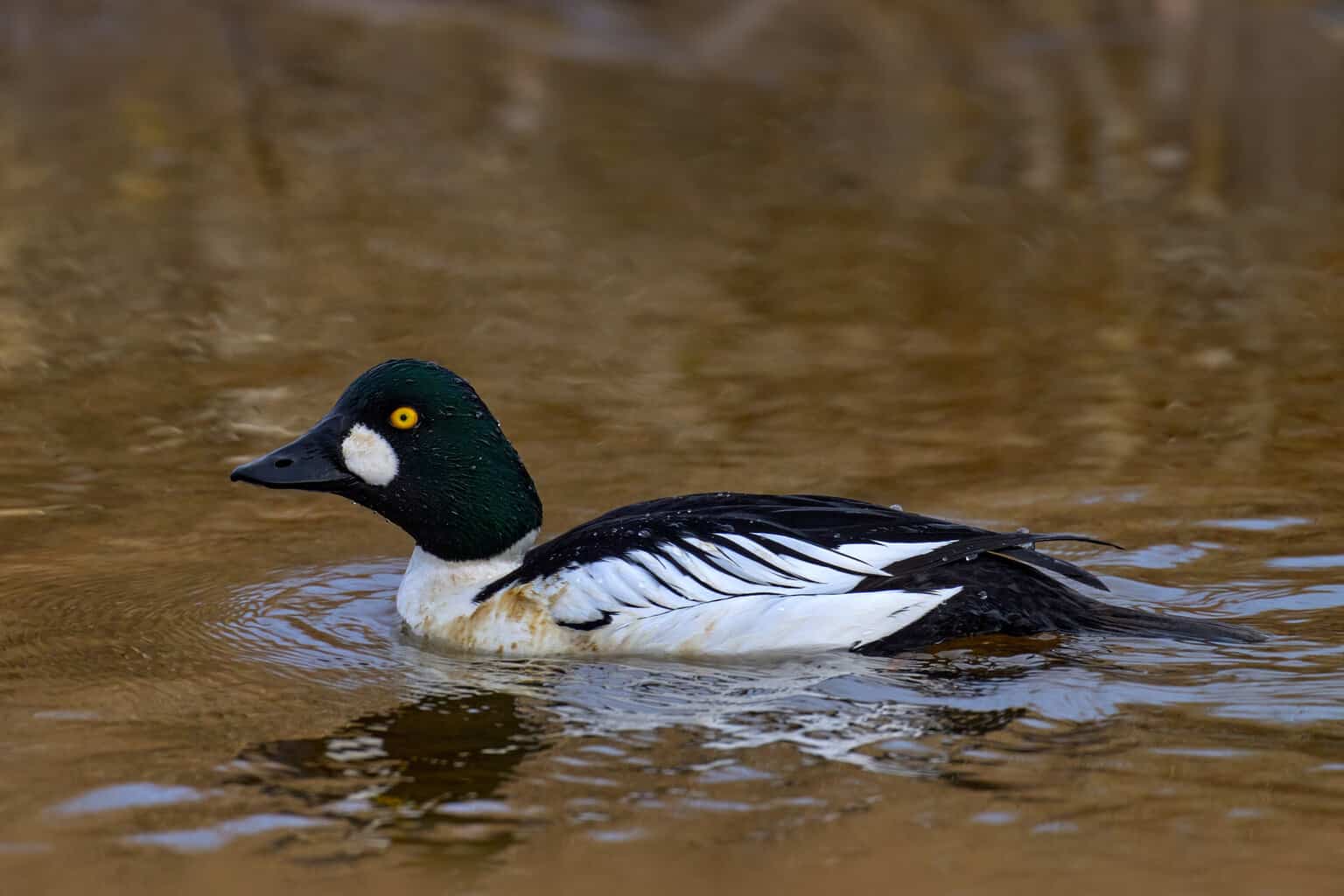
- Bucephala clangula
- Length: 15.8 – 20.1 in (40 – 51 cm)
- Weight: 21.2 – 45.9 oz (600 – 1300 g)
- Wingspan: 30.3 – 32.7 in (77 – 83 cm)
Common goldeneyes are also most commonly seen in Pennsylvania throughout the winter months. They typically arrive in November and depart in March. Look out for them along the shoreline of Lake Erie, where they mostly feed on fish, fish eggs, crustaceans, and insects.
Other duck species might be seen in this state, but the species listed above are among the most common and are a good place to begin when looking to learn more about the duck species present in Pennsylvania.

